
Teacher overview Format
- Subject:
- Architecture and Design
- Material Type:
- Lesson Plan
- Author:
- Yidi Hong
- Date Added:
- 04/13/2016

Teacher overview Format




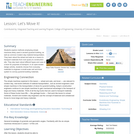
Students explore methods employing simple machines likely used in ancient pyramid building, as well as common modern-day material transportation. They learn about the wheel and axle as a means to transport materials from rock quarry to construction site. They also learn about different types and uses of a lever for purposes of transport. In an open-ended design activity, students choose from everyday materials to engineer a small-scale cart and lever system to convey pyramid-building materials.
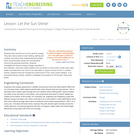
Students learn how the sun can be used for energy. They learn about passive solar heating, lighting and cooking, and active solar engineering technologies (such as photovoltaic arrays and concentrating mirrors) that generate electricity. Students investigate the thermal energy storage capacities of test materials. They learn about radiation and convection as they build a model solar water heater and determine how much it can heat water in a given amount of time. In another activity, students build and compare the performance of four solar cooker designs. In an associated literacy activity, students investigate how people live "off the grid" using solar power.

Through an introduction to the design of lighting systems and the electromagnetic spectrum, students learn about the concept of daylighting as well as two types of light bulbs (lamps) often used in energy-efficient lighting design.

"Nature furnished the materials for architectural motifs." This quote from Frank Lloyd Wright illustrates his desire to connect humans to the natural landscape through architecture. One successful example of this concept was his design of art glass windows that connected with the trees and leaves outside. Examine the beautiful window patterns Frank Lloyd Wright designed for the Martin House and then design your own Wright-style window inspired by nature.
More than a biography of America’s greatest architect, Frank Lloyd Wright's Buffalo is a story of family, friendship and the meaning of home in American life. The program explores how a friendship spanning decades affected the structural aesthetic of a major American city and made a significant impact on architectural history. Buffalo, New York has the unique privilege of having more Frank Lloyd Wright structures than any other city in America outside of Chicago. This collection of architecture is due to one man: Buffalo businessman Darwin D. Martin. The centerpiece of Wright’s work in Buffalo is one of Wright's earliest designs, the Darwin Martin House. Built in 1904, it precedes such masterpieces as the Robie House and Fallingwater and is considered by many as the finest example of his prairie house design. Learn more about the WNED PBS original production here.
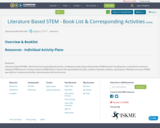
Literature Based STEM - Book List & Corresponding Activities:
Looking for grab-and-go elementary STEM lessons? Looking for a read-aloud to hook an existing STEM lesson? Trying to build a STEM library? Search the spreadsheet by titles, authors, big ideas, themes, and lessons. Whether you are a STEM specialist or a classroom teacher, these lessons will work for you.
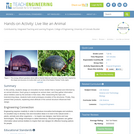
In this activity, students design an innovative human shelter that is inspired and informed by an animal structure. Each group is assigned an animal class, and they gather information about shelters used by the animals in that class. After researching the topic and brainstorming ideas, students build small prototypes (models) of the structures. Finally, they present their products, explaining what attribute of the animal structure influenced their design.

This is a textbook meant for use within The Living Arts (FINE 101) -- Chapters include introductions to Painting, Sculpture, Architecture, Theatre, Music, and Dance.
Course Description: An interdisciplinary survey of human creative efforts as they relate to each other. The visual and performing arts are compared with similarities stressed.
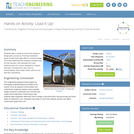
Students take a hands-on look at the design of bridge piers (columns). First they brainstorm types of loads that might affect a Colorado bridge. Then they determine the maximum possible load for that scenario, and calculate the cross-sectional area of a column designed to support that load. Choosing from clay, foam or marshmallows, they create model columns and test their calculations.


abst
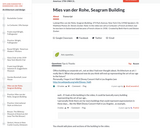
This art history video discussion examines Ludwig Mies van der Rohe's "Seagram Building", 375 Park Avenue, New York City (1958). Note: In the video I call Le Corbusier a French architect. This is somewhat reductionist since he was born in Swizerland and became a French citizen in 1930.

Un amor prohibido quee muchos no entenderán y aprobaran, pero apesar de las burlas, la discriminación en incluso insultos, lograron amarse.

The aim of the Portfolio Seminar is to assist in developing a critical position in relationship to their design work. By engaging multiple forms of representation, written and visual, students will explore methods that facilitate describing and representing their design work. Through a critical assessment of their existing portfolios, students will first be challenged to articulate design theses and interests in their past projects. Different mediums of representation will then be studied in order to hone an understanding of the relationship between form and content, and more specifically, the understanding of particular modes of representation as different filters through which their work can be read. Some of the questions that will be addressed are:
How does one go about describing an image?
How does one theorize representation?
How does one articulate a design thesis in writing verses visual media?
How can the two interact to enhance each other?
How do different media, printed verses web publishing, affect the representation of work?
How is your work best communicated?
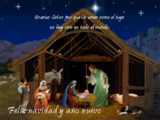
Dios nos ha dado una familia humana que nos ama y nos cuida.El libro de Génesis (37, 1-35; 45,1-28) podemos encontrar la historia de una familia, es una historia de amor, redención y perdón que a pesar de tardar varios años fue cumplida en base a las promesas que Dios le hizo a un adolescente llamado José. José es un personaje bíblico muy popular, sobre él se han hecho películas y obras de teatro. José tenía sueños especiales por eso la historia lo conoce como “José el Soñador”.
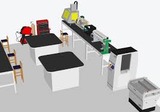
A PBL project I did in my HS physics and math classes to allow students voice & choice in the design of a maker space my school was building. It followed the Buck Institute model and allowed students to prove mastery in a varitey of learning targets per topics in both courses (probability, geometry, functions, algebra, and trig in geometry and force, energy, electricity & magnetism, etc. in physics). Please feel free to remix this project to suit your own needs.